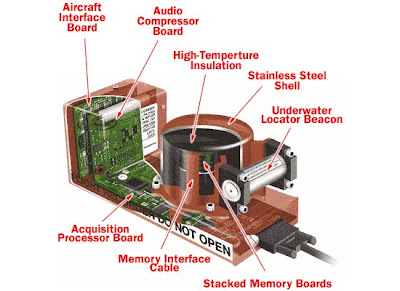Airliner Black boxes
The "black box" is a generic term for two recording devices carried aboard commercial airliners. The Flight Data Recorder (FDR) records a variety of parameters related to the operation and flight characteristics of the plane. The Cockpit Voice Recorder (CVR) records the voices of the flight crew, engine noise, and any other sounds in the cockpit. All large commercial airliners and certain varieties of smaller commercial, corporate, and private aircraft are required by law to carry one or both of these boxes, which generally cost between $10,000 and $15,000 apiece. The data these devices provide is often invaluable to experts investigating the events leading up to an accident. The recovery of the boxes is one of the highest priorities in any mishap investigation, second only to locating survivors or recovering the remains of victims. FDR information is also often used to study other aviation safety issues, engine performance, and to identify potential maintenance issues.












1 comment:
Very useful and informative post.
Post a Comment